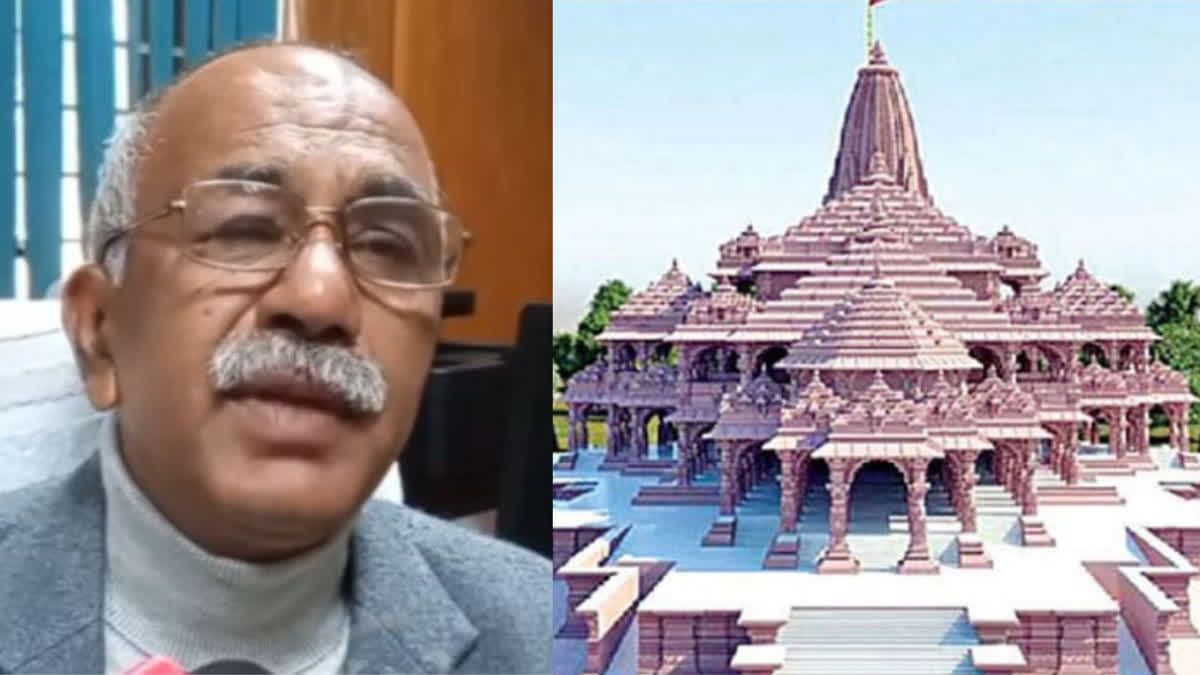Srinagar (Uttarakhand): The newly constructed Ram temple in Ayodhya is going to be consecrated on 22 January 2024. Against this backdrop, senior archaeologist and Vice Chancellor of Garhwal Central University, Prof. R C Bhatt, shared some insights into the sanctity involved in temple construction and the importance of activities like 'Pran Prathishta' (consecration). He pointed out that in Indian culture a temple has been described as a living being.
Speaking to ETV Bharat, Prof Bhatt said that Lord Shri Ram has great importance in religious and social life in India. He said that the Hindu concept is different from that of other religions on places of worship and temple has a prime place in the Sanatan culture. He said that in Indian culture, temple is not only a place of prayer but also a place of worship and its rules have been clearly enshrined in Indian religious texts.
Pran Pratishtha in temple architecture: Prof. RC Bhatt said that various architectural texts have been composed in this regard from the 5th century to the 13th century. Many things have been written regarding temple architecture. He said that the temple has been given the identity like a man. Just as there are parts of the human body, in the same way, the body of the temple also has many parts. Just as descriptions are given about human body parts, details of the parts of the temple have also been written.
Like human body, a temple also has parts: Prof. RC Bhatt told that the uppermost part of the temple is called Sheesh (top). Similarly, the temple has Mool (base), Garbhagriha Masarak (part between the foundation and walls), Jangha (wall), Kapot (cornice), Shikhar, Gal (neck), circular Amalak and Kumbh (urn with prongs). This is because the temple has been conceived like a living being, he said.
Prof. Bhatt said that the human body will not be alive unless there is a soul and a life in it. Similarly, unless there is life in the body of a temple, it will not be considered alive and the life of the temple lies in the idol of the sanctum sanctorum of the temple, he said.
Why Pran Pratishtha is done?- Prof Bhatt said that before worship is started in a temple, the ritual of installation of the deity into the idol taken up and it is called Pran Pratishtha, then only the temple is considered alive. That is why in Sanatan Dharma, the entire temple is circumambulated, said the senior archaeologist. The temple is to be equally worshiped as much as the idol is worshipped, he said.
- " class="align-text-top noRightClick twitterSection" data="">
Read More


